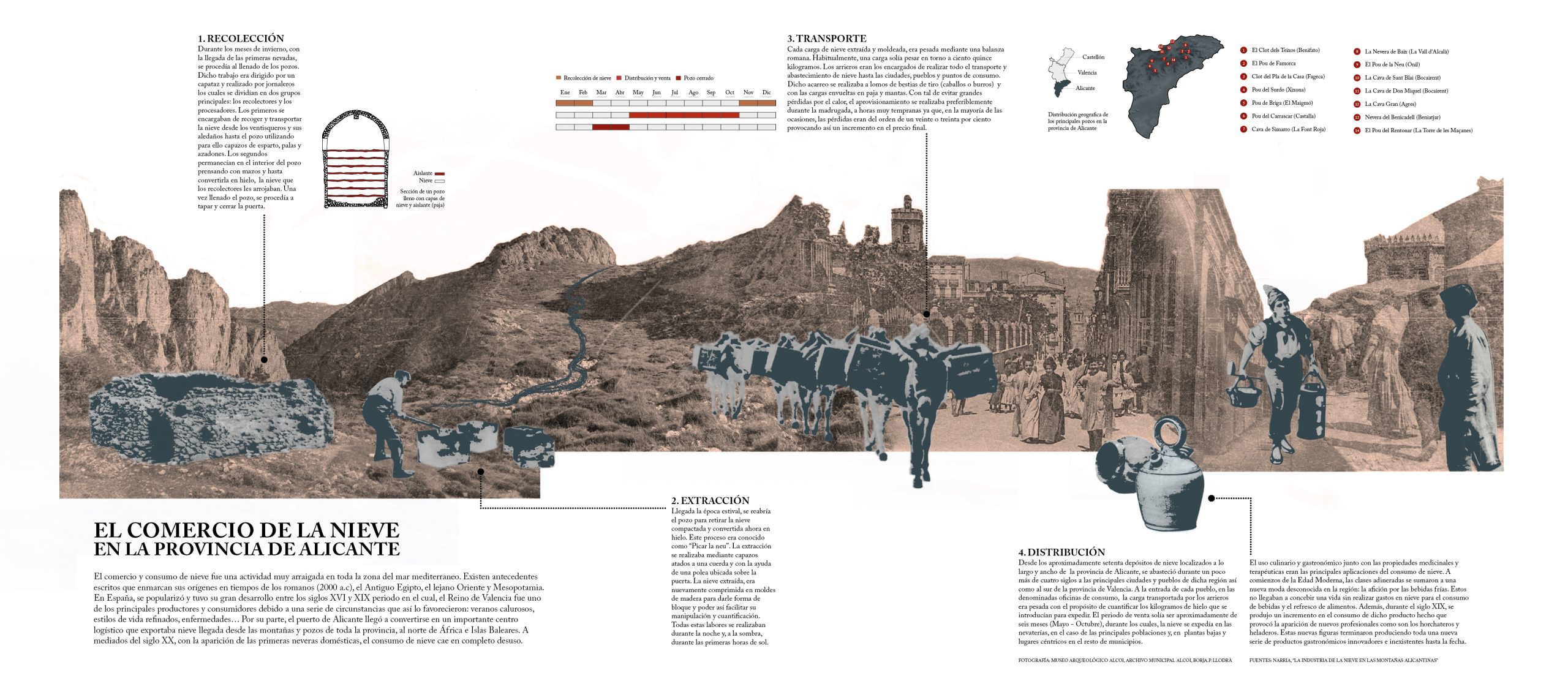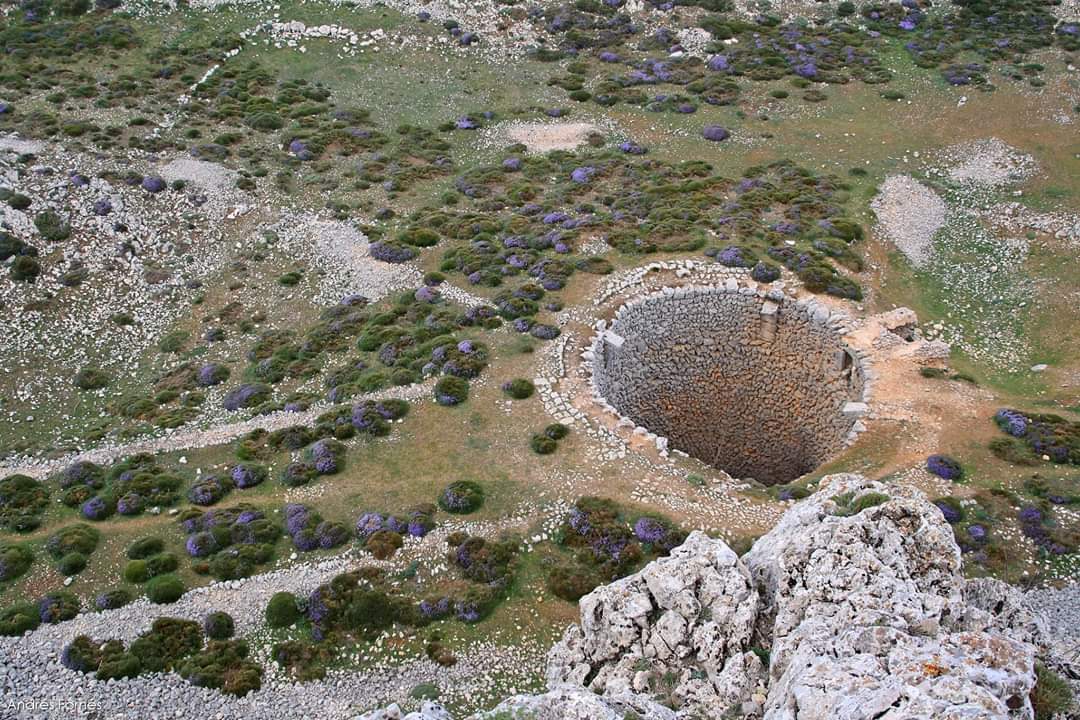The well, built in the eighteenth century, 13 meters deep, is an example of dry stone architecture and snow trade. Next to it are remains of the nevater’s house, an auxiliary well and “snowdrifts” or walls to collect snow.
The snow trade in the province of Alicante
The trade and consumption of snow was a deeply rooted activity throughout the Mediterranean Sea area. There are written antecedents that frame its origins in Roman times (2000 BC), Ancient Egypt, the Far East and Mesopotamia. In Spain, it became popular and had its great development between the 16th and 19th centuries, a period in which the Kingdom of Valencia was one of the main producers and consumers due to a series of circumstances that favored it: hot summers, lifestyles refined products, diseases… For its part, the port of Alicante became an important logistics center that exported snow that arrived from the mountains and wells throughout the province, to North Africa and the Balearic Islands. In the middle of the 20th century, with the appearance of the first domestic refrigerators, the consumption of snow fell into complete disuse.
1. Collection: During the winter months, with the arrival of the first snowfalls, the wells were filled. This work was directed by a foreman and carried out by laborers who were divided into two main groups: the collectors and the processors. The former were in charge of collecting and transporting the snow from the snowdrifts and their surroundings to the well using esparto baskets, shovels and hoes. The latter remained inside the well, pressing with mallets and turning it into ice, the snow that the collectors threw at them. Once the well was filled, the door was covered and closed.
2. Extraction: When the summer season arrived, the well was reopened to remove the compacted snow that had now turned into ice. This process was known as “Picar la neu”. The extraction was carried out by means of baskets tied to a rope and with the help of a pulley located on the door. The extracted snow was again compressed in wooden molds to give it a block shape and thus facilitate its handling and quantification. All these tasks were carried out at night and, in the shade, during the first hours of sunlight.
3. Transport: Each load of snow extracted and molded was weighed using a Roman scale. Typically, a load used to weigh around one hundred and fifteen kilograms. The muleteers were in charge of carrying out all the transport and supply of snow to the cities, towns and points of consumption. Said transport was carried out on the back of draft animals (horses or donkeys) and with the loads wrapped in straw and blankets. In order to avoid large losses due to the heat, provisioning was preferably carried out during the early hours of the morning, at very early hours, since, in most cases, the losses were of the order of twenty or thirty percent, thus causing an increase in the final price.
4. Distribution: From the approximately seventy snow deposits located throughout the province of Alicante, the main cities and towns of that region were supplied for a little over four centuries, as well as south of the province of Valencia. At the entrance of each town, in the so-called consumption offices, the load transported by the muleteers was weighed in order to quantify the kilograms of ice that were introduced to be dispatched. The sales period used to be approximately six months (May – October), during which the snow was issued in the snow shops, in the case of the main towns and, in ground floors and central places in the rest of the municipalities. The culinary and gastronomic use together with the medicinal and therapeutic properties were the main applications of the consumption of snow. At the beginning of the Modern Age, the wealthy classes joined a new fashion unknown in the region: the fondness for cold drinks. These could not conceive of a life without spending on snow for the consumption of drinks and refreshment of food. In addition, during the 19th century, there was an increase in the consumption of this product, which caused the appearance of new professionals such as horchateros and ice cream makers. These new figures ended up producing a whole new series of innovative and non-existent gastronomic products to date.


